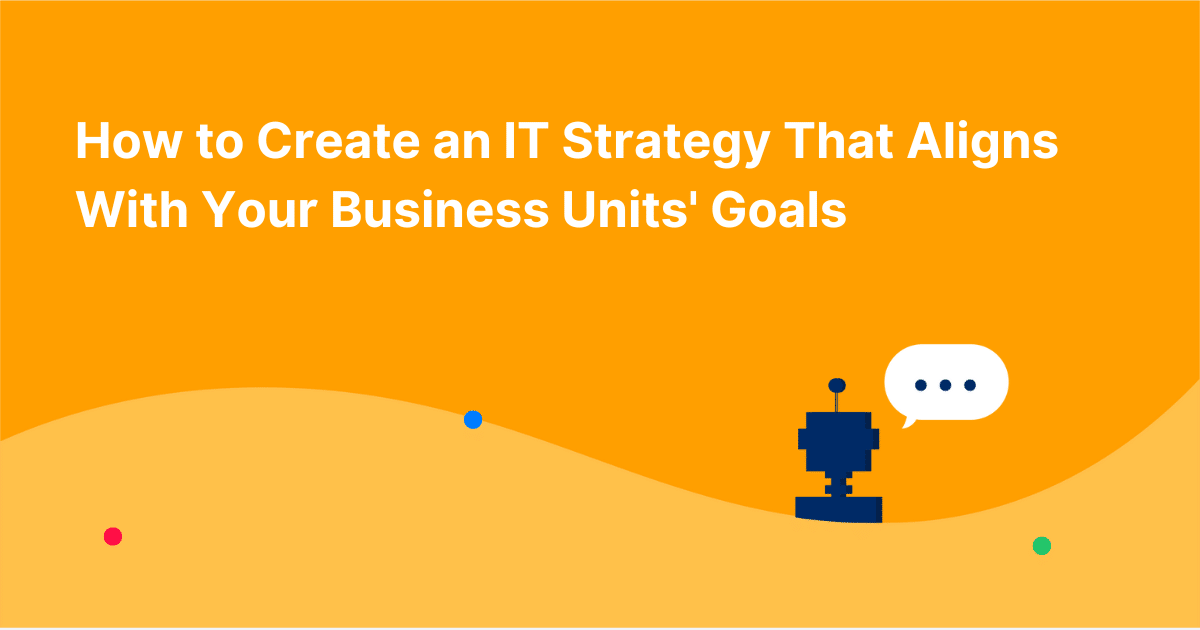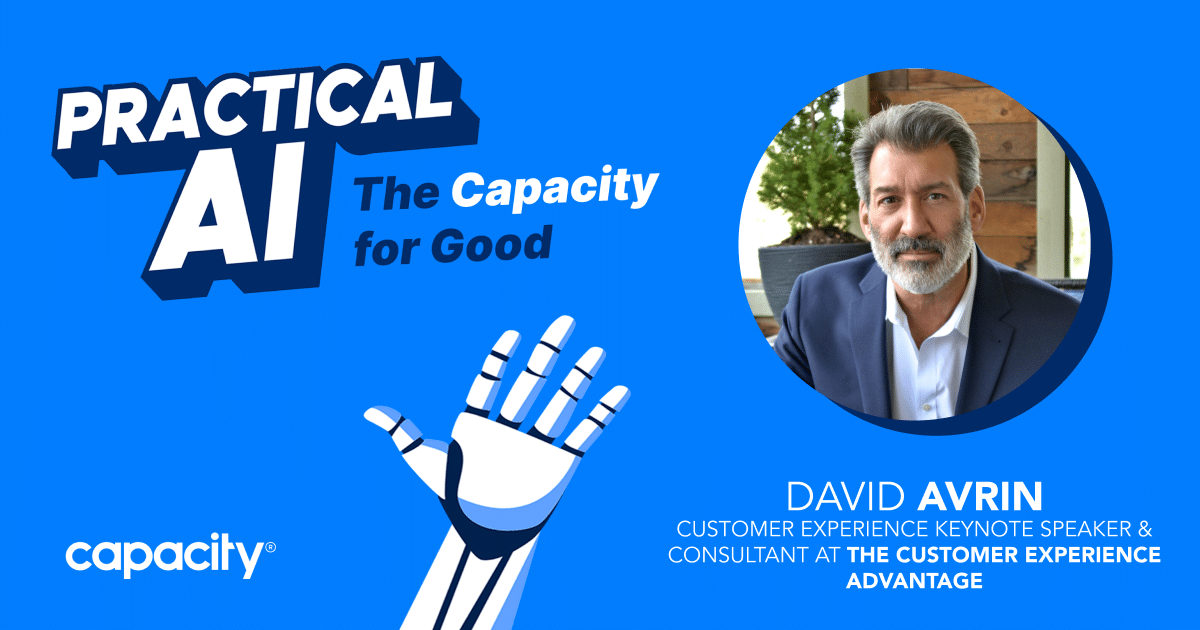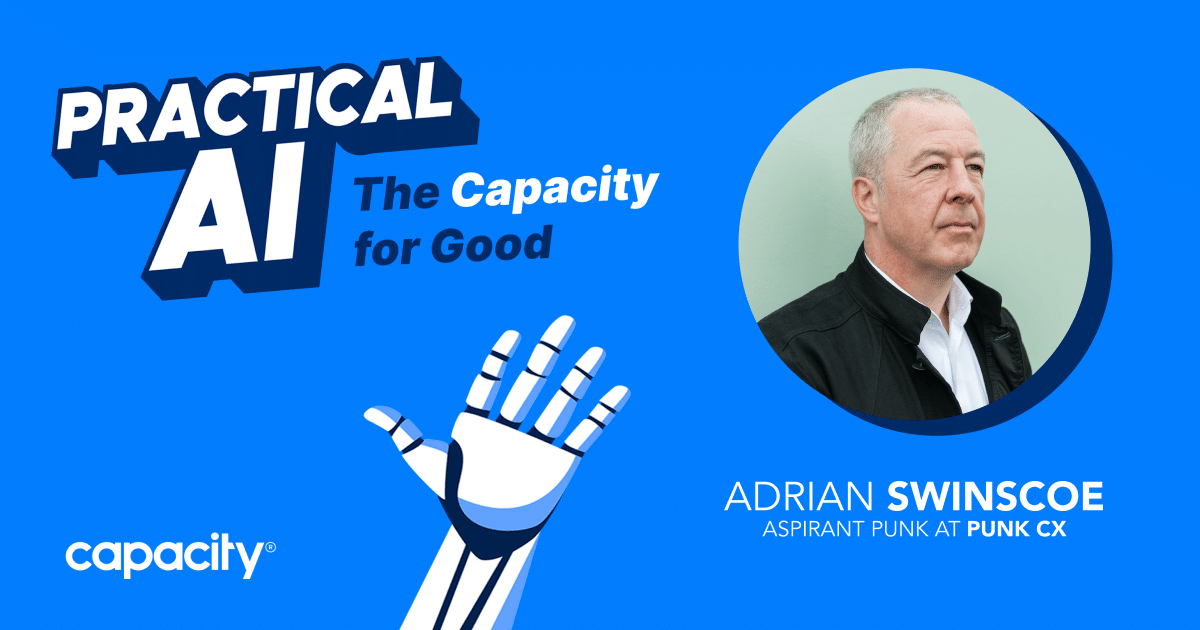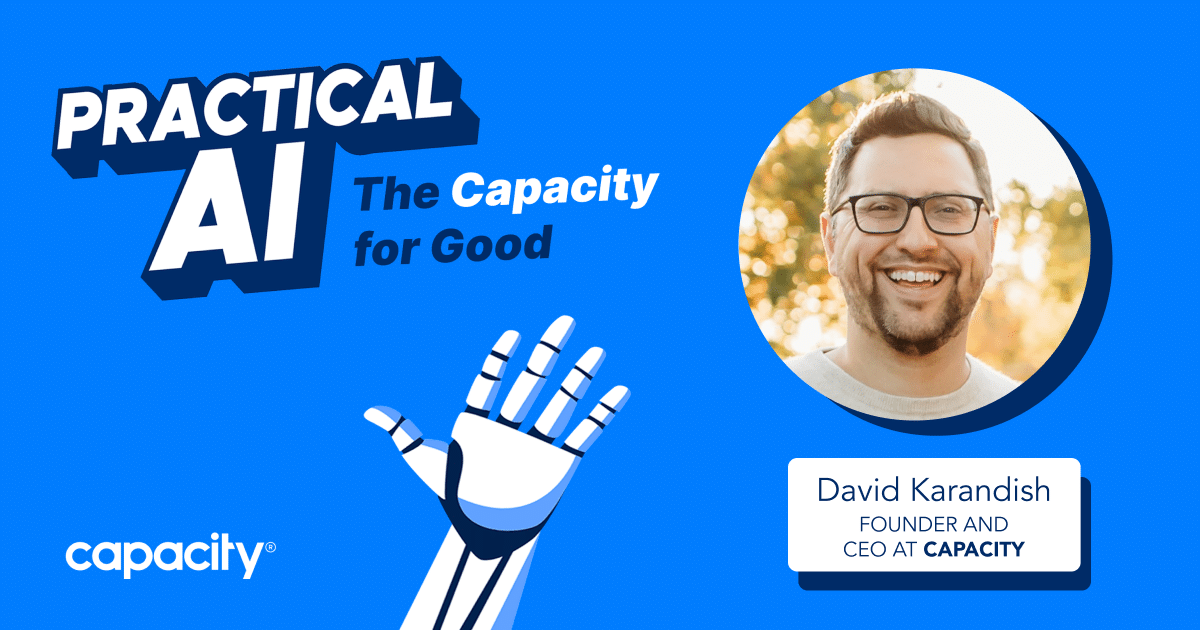Think of your IT strategy as a roadmap with clear directions and milestones, similar to using a GPS for navigation. Your business units’ goals are the destinations you want to reach. The IT strategy outlines the most effective routes, guiding you step-by-step toward each destination. Just as a GPS recalculates the route if you make a wrong turn, your IT strategy can be adjusted and optimized to keep you on track toward your business objectives. Here, we will explore how to build an effective IT strategy that can scale with your team and keep you focused on your goals.
The importance of aligning IT strategy with your business goals
A well-aligned IT strategy ensures that technology investments are directed towards initiatives directly contributing to achieving your business objectives. It allows for the seamless integration of technology solutions into existing processes and workflows, enabling smoother operations and better decision-making. Unsurprisingly, 70% of organizations have a digital transformation IT strategy or are working on one. By strategically embracing and using emerging technologies, your business can unlock new opportunities and stay ahead of the curve. A study by McKinsey found that organizations that have embraced digital transformation are 26% more profitable than their peers. Ultimately, aligning IT strategy with business goals fosters a synergistic relationship between technology and business, leading to improved performance, increased profitability, and sustainable growth.
Start mapping: the 10 milestones of an effective IT strategy
Milestone 1: Understand your business goals
Start by gaining a deep understanding of your business goals. Schedule meetings with key stakeholders from each business unit to identify their objectives, challenges, and growth opportunities. This collaborative approach will enable you to align your IT strategy with each unit’s specific needs and aspirations.
Milestone 2: Learn about your current IT landscape
Evaluate your existing IT infrastructure, systems, and processes. Conduct a thorough analysis to identify strengths, weaknesses, opportunities, and threats. By understanding how IT currently supports your business units, you can identify areas for improvement and devise strategies to bridge gaps.
Milestone 3: Identify IT priorities
Based on your assessment, determine the critical IT areas that require attention and align with your business goals. Prioritize initiatives that have the most significant impact on improving business unit performance and overall strategic objectives. This approach ensures that your IT resources are effectively utilized and focused on the areas that matter most.
Milestone 4: Develop IT strategy framework
Define a clear and comprehensive IT strategy framework that outlines the goals, objectives, and key initiatives. Ensure that each initiative aligns with specific business unit goals and contributes to the overall business strategy. This will serve as a guiding document and help your team understand the IT initiatives’ strategic direction and purpose.
Milestone 5: Engage stakeholders
Involve key stakeholders from business units and the IT department in the strategy development process. Hold collaborative workshops, meetings, and brainstorming sessions to gather input, gain buy-in, and ensure that the IT strategy reflects the needs and aspirations of all stakeholders. This fosters a sense of ownership and promotes successful implementation.
Milestone 6: Set clear and actionable goals
Establish specific, measurable, achievable, relevant, and time-bound (SMART) goals for each IT initiative. These goals provide clarity and direction, enabling your team to stay focused and monitor progress effectively. SMART goals serve as benchmarks and help evaluate the success of your IT strategy.
Milestone 7: Define how you’ll allocate resources
Determine the necessary resources required to implement an IT strategy, including budget, personnel, and technology. Adequate resource allocation is essential for the successful execution of your initiatives. By ensuring that you have the right resources in place, you can avoid bottlenecks and maintain momentum throughout the implementation process.
Milestone 8: Build agile IT Infrastructure
Assess your IT infrastructure and consider adopting flexible and scalable technologies that enable agility, innovation, and adaptability. Embrace cloud solutions for enhanced scalability, cost-efficiency, and faster time-to-market. An agile IT infrastructure supports your business units’ evolving needs and facilitates the seamless implementation of new technologies and processes.
Milestone 9: Establish governance and change management
Implement an IT governance framework to ensure effective decision-making processes and accountability. Clearly define roles and responsibilities for both IT and business units. Additionally, implement change management strategies to support the smooth implementation of IT initiatives. Change can be challenging, but with proper governance and change management in place, you can mitigate resistance and ensure successful adoption.
Milestone 10: Monitor, evaluate, and adjust
Continuously monitor and evaluate the progress of your IT initiatives against established goals and metrics. Regularly review and adjust the IT strategy based on feedback and changing business needs. Celebrate successes, learn from failures, and iterate to optimize the strategy over time. This iterative approach ensures that your IT strategy remains relevant and practical as your business evolves.
Creating an IT strategy that aligns with your business units’ goals is crucial for driving growth and achieving success. Following the 10 milestones outlined above, you can develop a scalable and effective IT strategy supporting your business objectives. Regularly reassess and adjust your strategy to keep pace with technological advancements and changing market dynamics. With a well-aligned IT strategy, you can empower your IT team to deliver tangible value and contribute to the overall success of your organization.

Automate Your Work
Capacity’s enterprise AI chatbot can help:
- Answer FAQs anytime, anywhere
- Find relevant documents within seconds
- Give surveys and collect feedback





